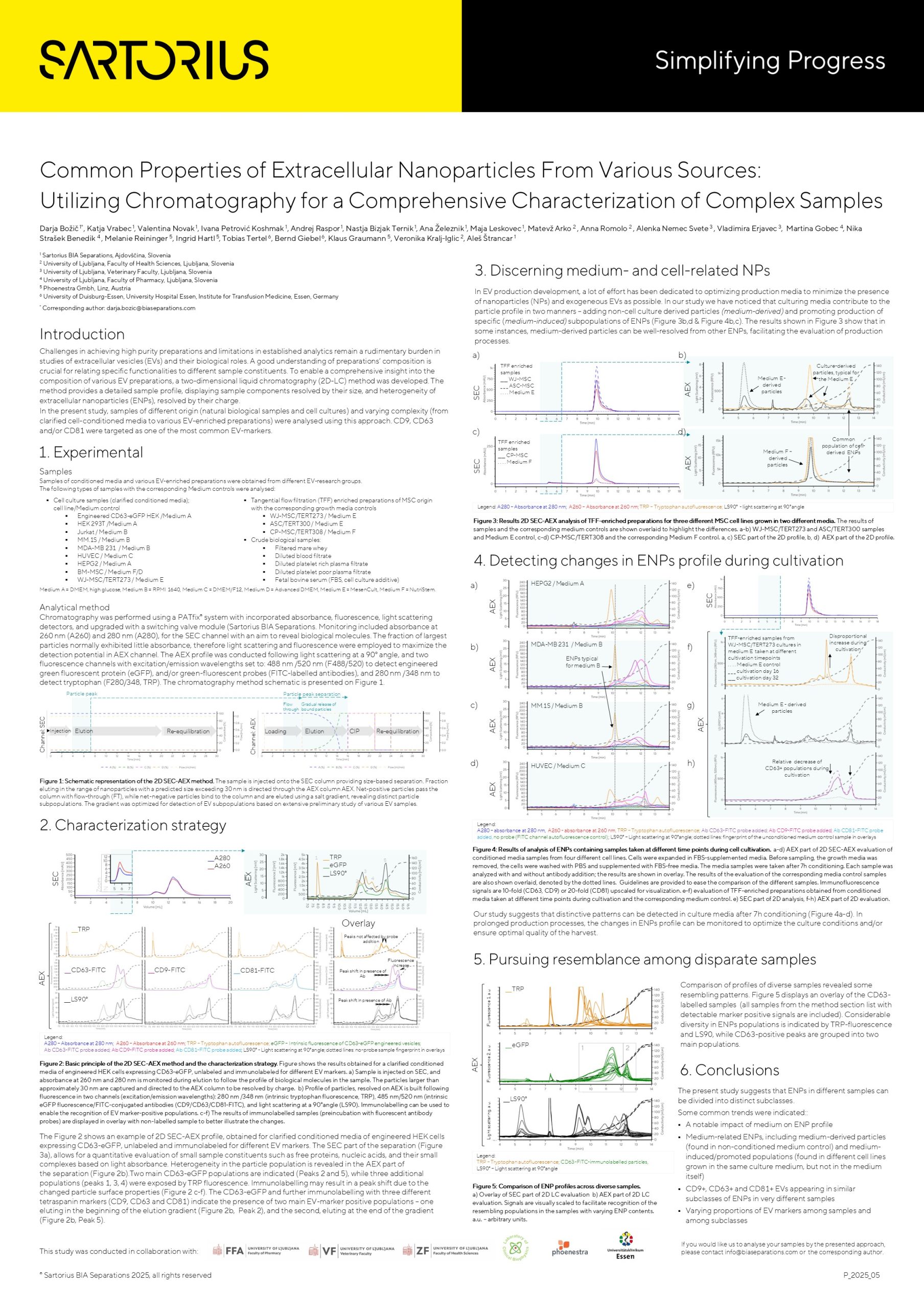Challenges in achieving high purity preparations and limitations in established analytics remain a rudimentary burden in studies of extracellular vesicles (EVs) and their biological roles. A good understanding of preparations’ composition is crucial for relating specific functionalities to different sample constituents. To enable a comprehensive insight into the composition of various EV preparations, a two-dimensional liquid chromatography (2D-LC) method was developed. The method provides a detailed sample profile, displaying sample components resolved by their size, and heterogeneity of extracellular nanoparticles (ENPs), resolved by their charge. In the present study, samples of different origin (natural biological samples and cell cultures) and varying complexity (from clarified cell-conditioned media to various EV-enriched preparations) were analysed using this approach. CD9, CD63 and/or CD81 were targeted as one of the most common EV-markers.

